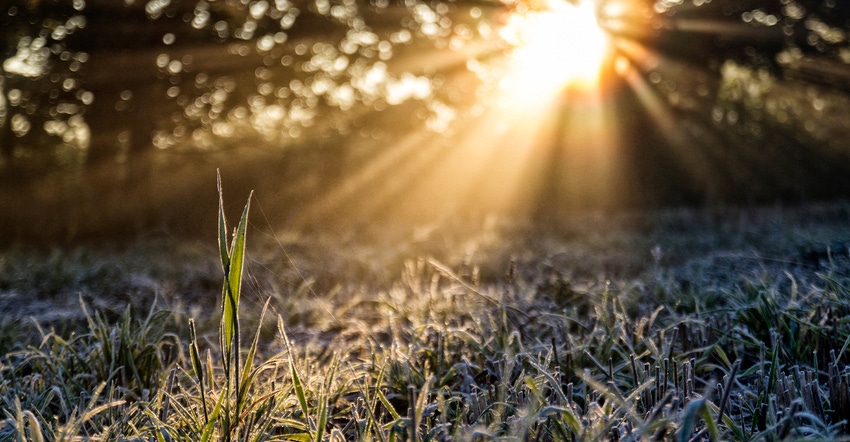July 1, 2019

A frost in the month of August is a rare occurrence in Minnesota these days.
Yes, it sometimes happens in far northeastern counties on the Iron Range or in the landscapes of Superior National Forest. Nearly all the rest of the state remains frost-free in August and typically does not see any sign of frost until the third or fourth week of September.
This has not always been the case, as 19th and early 20th century climate data for Minnesota show some years with widespread frost in the month of August, in most cases when the month is drier than normal. Some of these years include 1863, 1872, 1891, 1907 and 1915.
Perhaps the most damaging widespread frosts during the month of August in terms of Minnesota agriculture occurred in 1915. During that August, frosts occurred on the 18th and 19th in northern counties, then again on the 26th and 27th in north and central counties, and finally on the 30th in southeastern counties.
Temperatures in the north, especially the Red River Valley and Lake of the Woods regions, dropped into the range of 23 degrees F to 30 degrees, while elsewhere, including portions of Olmsted, Goodhue and Winona counties, climate stations recorded temperatures of 31 degrees and 32 degrees. At the time then in 1915, it was reported that these were the most damaging frosts to agriculture since those of Aug. 28-30, 1863, when climate records across the new state of Minnesota were relatively scarce and there was little documented acreage of crops being grown in the state.
Throughout the second half of August in 1915, farmers in Minnesota reported widespread frost damage to corn, which were open-pollinated varieties back in that day, along with beans, potatoes and alfalfa.
According to news accounts, a good deal of corn was harvested for silage that year and used to feed cattle and dairy cows. Minnesota livestock and dairy industries were undergoing large growth cycles during this era.
The damaging frosts provoked the scientists working for the University of Minnesota Agricultural Experiment Station to study the advantages of earlier planting dates for many crops so that they would not be so susceptible to frost damage in August.
The multiple frosts and widespread crop damage of August 1915 was perhaps singular in occurrence from a historical perspective. There has been little occurrence of August frost damage for Minnesota agriculture since 1915, except for some spotty frosts in August 1931, 1964 and 1987. But those were all primarily isolated geographically and occurred on only one day.
Over the past 20 years, on a statewide basis, August has brought warmer-than-normal temperatures to the state 70% of the time and certainly no agriculturally damaging frosts of any kind.
In fact, this year a warmer-than-normal August will be needed to boost crop development towards maturity following one of the latest planting seasons in the modern era.
Seeley is professor emeritus of climatology, University of Minnesota.
About the Author(s)
You May Also Like




